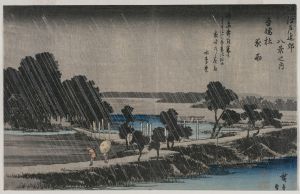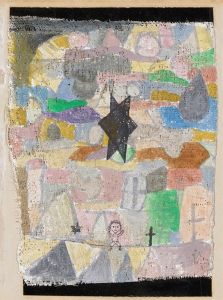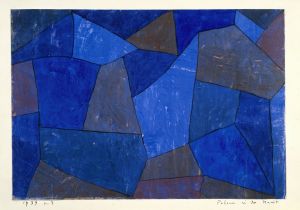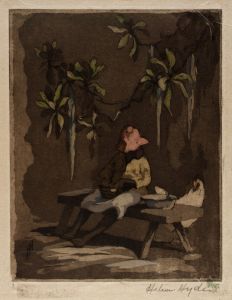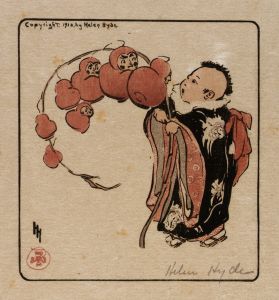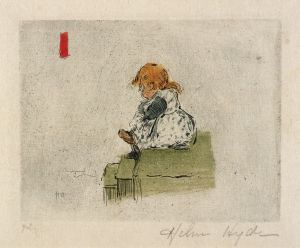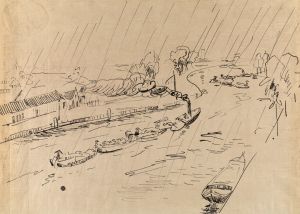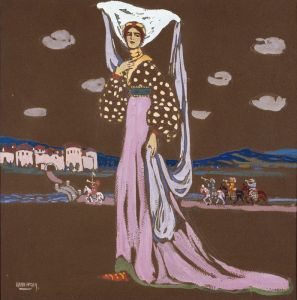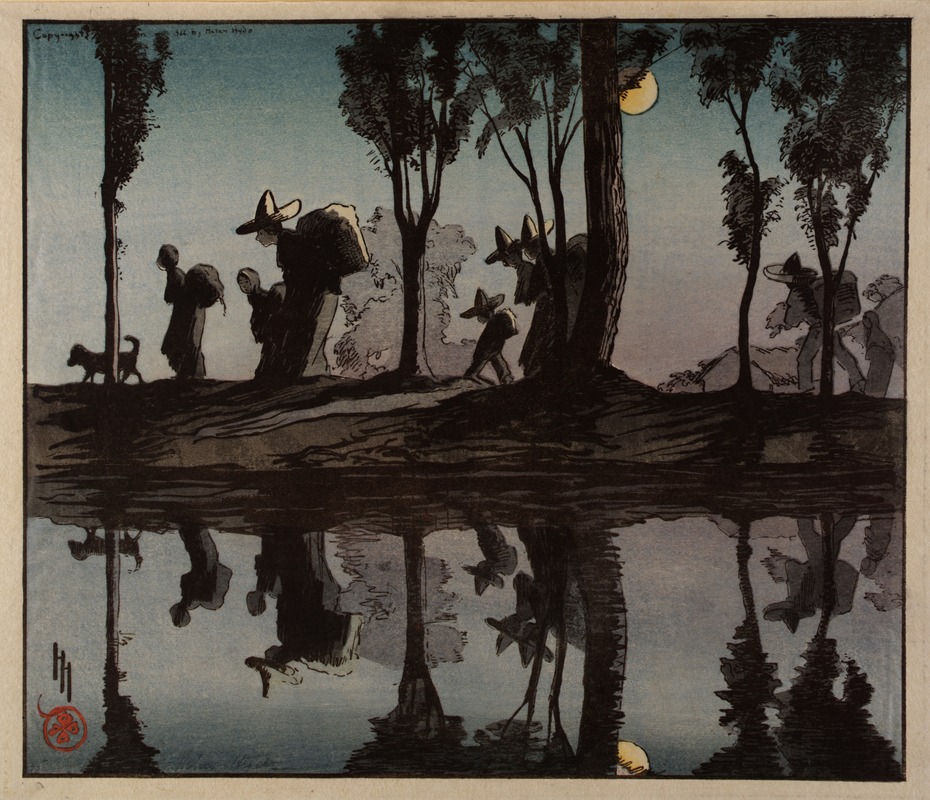
Moonlight On The Viga Canal
A hand-painted replica of Helen Hyde’s masterpiece Moonlight On The Viga Canal, meticulously crafted by professional artists to capture the true essence of the original. Each piece is created with museum-quality canvas and rare mineral pigments, carefully painted by experienced artists with delicate brushstrokes and rich, layered colors to perfectly recreate the texture of the original artwork. Unlike machine-printed reproductions, this hand-painted version brings the painting to life, infused with the artist’s emotions and skill in every stroke. Whether for personal collection or home decoration, it instantly elevates the artistic atmosphere of any space.
Helen Hyde (1868–1919) was an American artist known for her work in printmaking and painting, particularly her contributions to the Japonisme movement, which was the influence of Japanese art and aesthetics on Western culture. One of her notable works is "Moonlight On The Viga Canal," a piece that exemplifies her style and thematic interests.
"Moonlight On The Viga Canal" is a color woodblock print created by Hyde, who was renowned for her ability to blend Western and Eastern artistic techniques. This particular work reflects her fascination with Japanese woodblock printing methods, which she studied extensively during her time in Japan. Hyde's work often depicted serene and intimate scenes, and this print is no exception, capturing a tranquil moment along the Viga Canal.
The Viga Canal, located in Mexico City, was a significant waterway during the colonial period and into the early 20th century. It was used for transportation and commerce, and its picturesque quality made it a popular subject for artists. Hyde's depiction of the canal under moonlight suggests a peaceful, almost ethereal quality, emphasizing the beauty of the natural landscape combined with human activity.
Hyde's artistic journey began in the United States, where she studied at the California School of Design in San Francisco. She later traveled to Europe, where she continued her studies in Berlin and Paris. However, it was her time in Japan that had the most profound impact on her work. Hyde lived in Japan from 1899 to 1914, where she immersed herself in the study of traditional Japanese art forms, particularly ukiyo-e, a genre of woodblock prints that flourished from the 17th through 19th centuries.
Her work, including "Moonlight On The Viga Canal," is characterized by its delicate lines, subtle color palette, and the incorporation of Japanese techniques such as the use of flat color areas and an emphasis on pattern and design. Hyde's prints often featured women and children, capturing everyday moments with a sense of grace and tranquility.
"Moonlight On The Viga Canal" is a testament to Hyde's skill in merging different cultural influences to create a unique artistic expression. Her ability to convey mood and atmosphere through her prints has been widely recognized, and her works are held in various collections, including the Library of Congress and the Smithsonian American Art Museum.
Hyde's contributions to the art world were significant during her lifetime, and her works continue to be appreciated for their beauty and technical mastery. Her prints offer a glimpse into the cross-cultural exchanges that characterized the early 20th century, reflecting a world where artists were increasingly looking beyond their borders for inspiration.
In summary, "Moonlight On The Viga Canal" by Helen Hyde is a beautiful example of her work that captures the essence of her artistic vision. Through her innovative use of Japanese woodblock techniques and her sensitive portrayal of serene landscapes, Hyde left a lasting impact on the art world, bridging the gap between Eastern and Western art traditions.





